Quick search
On your way to finding the perfect longtail speed pedelec, we understand. After all, we’re in the same boat. While the current legislation around these models may not be optimal, and there aren’t yet a large number on the market, the idea of the longtail benefits at a speed of maximum 45 km per hour is very appealing.
In this guide, we highlight a few of our favorite longtail speed pedelec models, so you can get an idea of which one best suits your route. Sign up for our newsletter to stay informed about the unveiling of new longtail speed pedelecs in 2024.
Especially for parents with small children going through this list: pay attention to the current legislation, which states that children under 3 years old are not allowed to be transported on a speed bike, including in a trailer. While we can’t tell you what to do, we do want to point out that violating this legislation can result in hefty fines. Furthermore, it puts the safety of you and your child at risk.
Riese & Muller Multicharger2 HS
The best (or only) Longtail speed pedelec
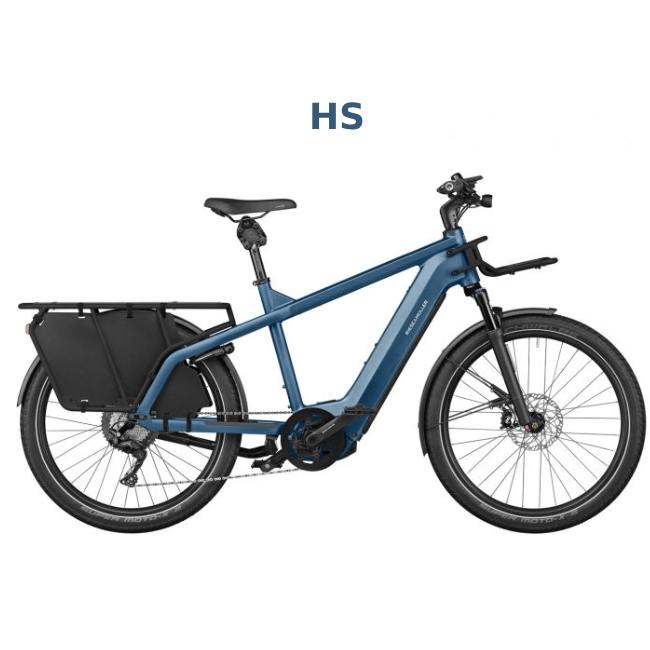
The Multicharger2 HS is a rarity: a longtail speed pedelec. There aren’t many models like this on the market, and usually, a brand takes the lead as a pioneer. So is the case here, with Riese & Muller, who have introduced their second longtail speed pedelec, the Multicharger2 HS (following the Multicharger1).
At the moment, this is the best longtail speed pedelec simply because it is one of the few available and because of the reliable quality of Riese & Muller.
Excellent riding comfort, safety, high-quality components – there’s little negative to say about these bikes or the brand in general. The only stumbling block might be the price, as at €8,000, it’s one of the most expensive longtail speed pedelecs.
Important note: we mention € 8000, but you can also find it for € 5600. The latter version has an Enviolo hub gear system. Very good for cycling up to 25 km/h but not for speed pedelecs. Hence, € 8000 for the Riese Muller with Rohloff gearing. Only that one can be considered as the best longtail speed pedelec.
Although we’ve written about the Riese & Muller Multicharger2 several times, the HighSpeed version is also impressive. It’s identical to the electric longtail bike, with the only difference being the upgrade to the Bosch speed pedelec motor. A simple upgrade for Riese & Muller, given the already high quality of their electric longtail bike.
It effortlessly makes the transition to 45 km/h, but not without its drawbacks. Although the Bosch motor has been adapted for higher speeds, it doesn’t reach and maintain the intended speed of 45 km/h. This Bosch motor is just not powerful enough to be a truly fully-fledged speed pedelec motor.
And then there’s another point to consider: if you’re planning to carry heavy loads and use the bike as a full-fledged cargo bike, a lower design with smaller tires might be more interesting.
At high speeds, you lean more in corners, and the higher-placed weight can negatively impact the riding experience, potentially leading to falls in the worst-case scenario. Too much weight, or a child suddenly bringing negative momentum by turning around when a tractor passes by… So, while the Multicharger2 HS may seem ideal at first glance, it does have a few points to consider.
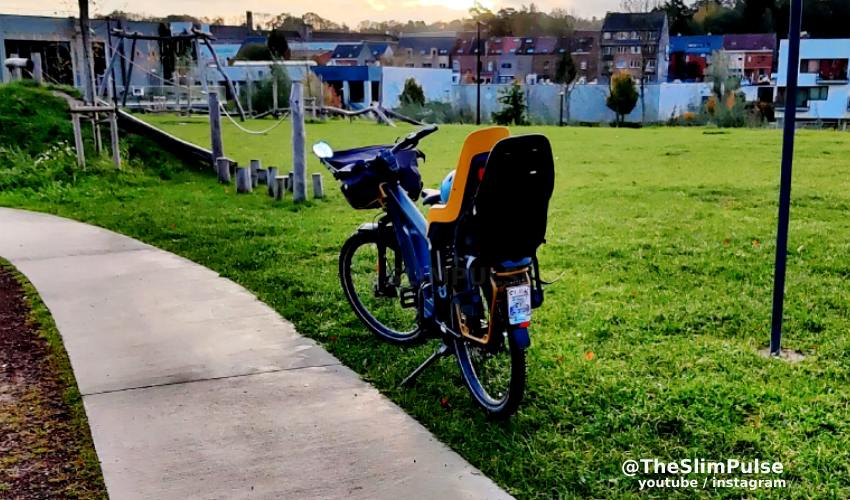
Ellio Marty
Low Center of Gravity, Suspended Frame, and Power
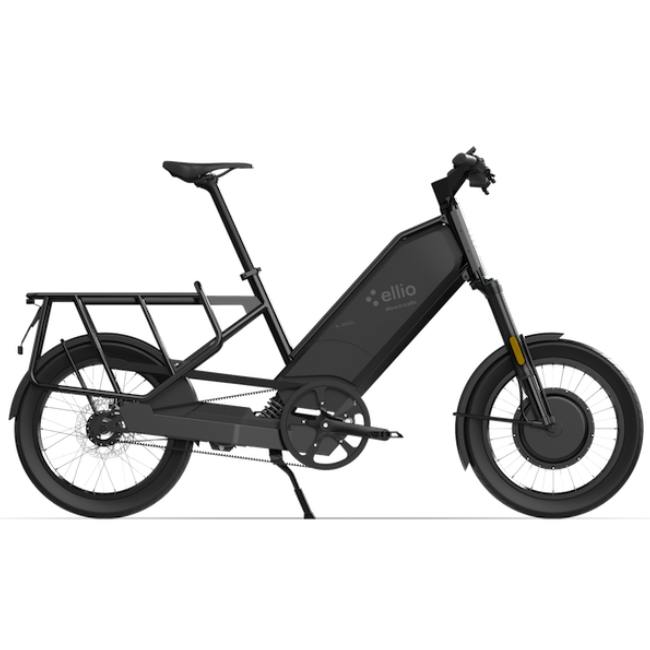
For those seeking a combination of speed and carrying capacity, we may have good news. In 2024, a new longtail speed pedelec will be introduced to the market, at least in Belgium and likely also in the Netherlands: the Ellio Marty. This model is based on the Ellio Original, their first speed pedelec.
An outstanding new feature as well. This is not just a longtail speed pedelec, but also a longtail with frame suspension. Unique. This is something we haven’t seen before, not even from Riese & Muller. Always nice to see when a Belgian brand is pioneering.
When designing the Marty, the focus is on ride comfort and safety, just like with the Original, but with the ability to carry up to 2 children.
However, the unique aspect of this bike lies in the motor. Ellio uses their own IntuEdrive motor for the Marty, a choice that leads to attractive features such as cruise control, a speed limit, and intuitive motor braking. With these features, Ellio places the Marty in the premium segment, yet the price remains “okay” compared to the Multicharger2.
As for speed, there’s a clear difference with other longtail speed pedelecs. With the Ellio Marty, a speed of 45 km/h is relatively easy to achieve – and also maintain. The strong battery certainly contributes to this, but there’s also a downside: this large battery and special motor bring the weight of the Marty to about 40 kilograms. Not very light, but thanks to the design of the bike with 20-inch tires and a low center of gravity, this doesn’t cause too much trouble.
Ellio has deliberately chosen quality components (brakes, suspension, tires, etc.) for the Marty to ensure safety and comfort. The design, including the smaller 20-inch tires, is aimed at ensuring stability and agility at high speeds, something that is extremely important for longtail speed pedelecs intended to carry loads. A stark contrast to the Riese & Muller Multicharger, where transporting 50 kg of weight can be particularly impractical due to the height of the bike.
Ecobike Longtail Speed Pedelec
A Budget-Friendly Option We Don’t Know Much About Yet
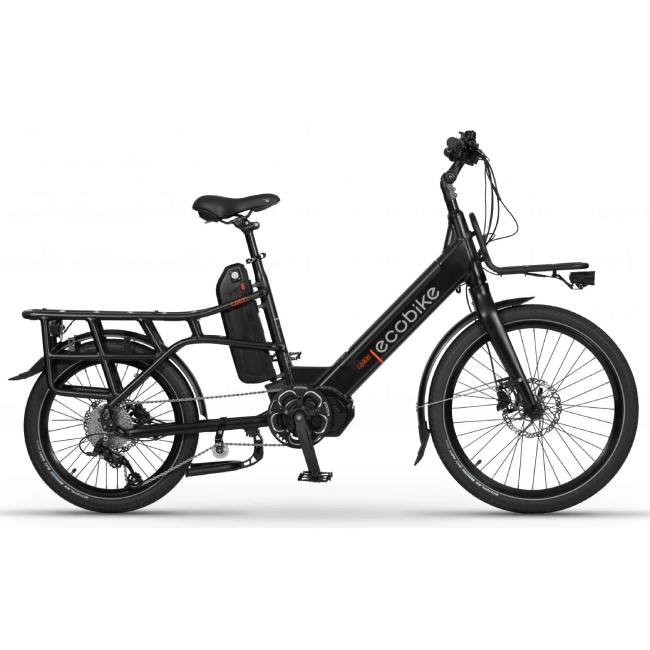
A brand that may be less familiar is Ecobike. This brand primarily focuses on cheaper e-bikes, which is immediately evident from the price of their longtail speed pedelec: it is available for €2,900. This is a fraction of the price of the Riese & Muller Multicharger, and for the price of one Ellio, you can purchase two Ecobikes.
Unfortunately, we haven’t been able to see, feel, touch, or test this longtail speed pedelec in real life yet, so we can’t say much about its actual quality. However, it’s interesting to know that there is already an affordable option on the market that is approved for sale in Belgium and the Netherlands.
This bike is equipped with a Bafang mid-drive motor, a motor that we are familiar with. This motor delivers 139 Nm of torque, which is comparable – although slightly less powerful – to the Bosch Speed Performance Line. The riding experience may be similar, although perhaps slightly less smooth and with a bit more noise.
What is striking is the peak power of 950 watts, which is higher than that of the Bosch Speed Pedelec mid-drive motor. This leads us to suspect that a speed of 45 km/h is likely achievable, but perhaps not for an extended period unless you pedal hard.
Furthermore, this bike features a 10-speed derailleur system – no automatic transmission – and a 672Wh battery, expandable to a whopping 1440Wh. However, please note that 950Wh is a high capacity and may affect the riding behavior.
The bike has an aluminum frame. A design choice, although we prefer a steel frame for cargo and weight. The total weight is 30kg, an average weight. What stands out is the combination of different wheel sizes: a low step-through with a 20-inch rear wheel and a 24-inch front wheel.
So, while we can’t say much about the final quality of this inexpensive longtail speed pedelec yet, it’s definitely worth considering. Try out the bike before making a purchase. If you’re not satisfied with your purchase after receiving the bike, you can always rely on your right of return.
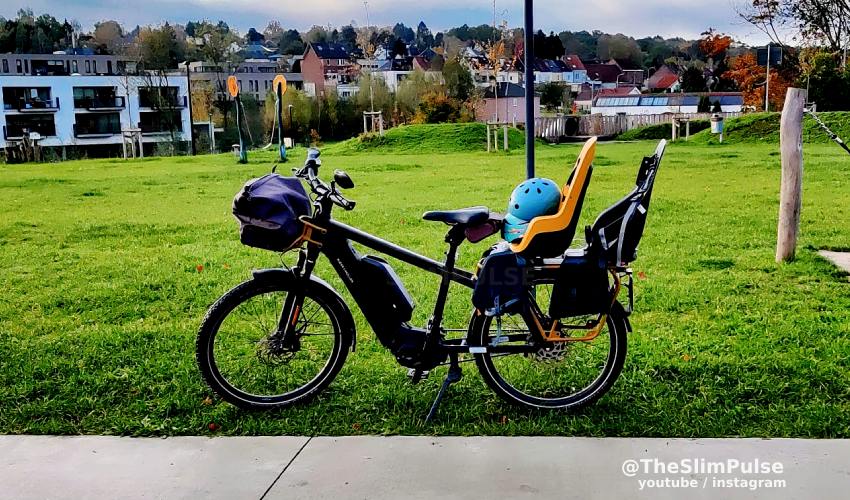
Our Opinion on Longtail Speed Pedelecs
The longtail speed pedelec. This topic is close to our hearts, and not without reason. We are considering using a longtail speed pedelec ourselves in the future and are aware of both the advantages and disadvantages.
One of our biggest frustrations is that the legislation currently does not align well with the needs of parents who want to use a speed pedelec. We understand the intention of the laws: it is not safe to transport young children at such high speeds. We expect that from our legislation.
However, what is frustrating is that as parents, we are almost forced to purchase two bikes: one to transport my child(ren) and one to ride myself at speeds up to 45 kilometers per hour.
There is also an unfairness in this somewhere. After all, with a car, you can drive faster than permitted, but it is not limited to a maximum speed. If you exceed the speed limit, you risk a fine.
It seems more logical to us if the same approach would apply to the speed pedelec: you can ride up to 45 kilometers per hour, but once children are on the bike, you adhere to the speed of 25 kilometers per hour. If you break this rule and ride faster, you can be fined.
This seems to us a much more pragmatic approach than simply fining everyone with a speed pedelec who has young children on board, younger than three years old. Imagine: you ride at 10 kilometers per hour on a speed pedelec with two children on board, while a longtail bike passes you at 25 kilometers per hour. If there is police nearby, you will be fined, simply because you have a speed pedelec, even though you are only riding at 10 kilometers per hour.
Base regulation on speed, not on the class of the bike. Adapt the infrastructure and checkpoints accordingly, but above all, start by adjusting the laws so that we, a country at the forefront of speed pedelec usage, can also demonstrate this legally. Manufacturers, users, and creators are asking for this. It’s time to address this.
A Future with More Longtail Speed Bikes
We envision the ideal future longtail speed pedelec as a model with an on and off switch. With the switch set to ‘off,’ you can ride at a maximum of 25 kilometers per hour to transport children, even if they are younger than three years old. And with the switch set to ‘on,’ you can enjoy higher speeds to reach your destination when not carrying passengers.
This idea is not new in itself; we are certainly not the first to think of it, and we even believe that Ellio is working on this (intentionally or not?). Their first support level goes up to 25 km per hour, their second to around 30-35, and their highest support level achieves the top speed of 45 km per hour.
So, you can imagine that at the first level, this is a regular electric bike, with a very powerful motor, yes, but limited. In the second level, it’s for city use where you can go up to 30 km per hour, and the third level is for when we are on bicycle highways and can ride up to 45 km per hour.
Once the legislation is adapted to this, we expect that more longtail speed pedelecs will come onto the market. Currently, there is little to no motivation from manufacturers to develop these.

